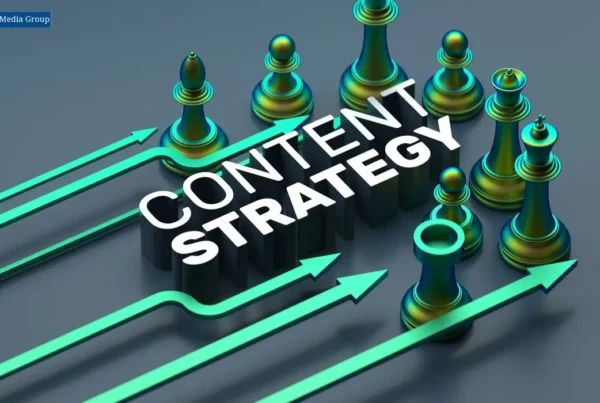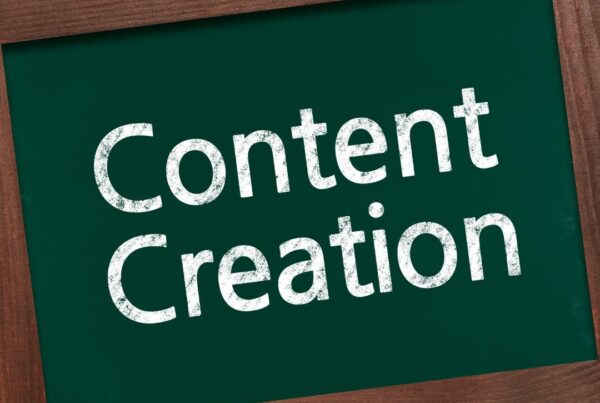In today’s digital landscape, crafting attention-grabbing captions and headlines is not just an art; it’s a science.
As we navigate through the intricacies of content marketing, understanding the nuances of these elements becomes paramount.
Let’s delve deeper into the strategies and techniques to master the craft of writing captivating captions and headlines.
Introduction to Captions and Headlines:
Captions and headlines serve as the gateway to your content.
They are the first touchpoint for your audience, often determining whether they engage further or scroll past.
Therefore, it’s essential to recognize their significance in shaping the perception of your content.
Captions provide context and storytelling elements, while headlines encapsulate the essence of your content concisely and compellingly.
Understanding the Audience:
The cornerstone of effective caption and headline writing lies in understanding your audience intimately.
Beyond basic demographic data, delving into psychographic aspects such as interests, values, and pain points enables you to tailor your messaging with precision.
By resonating with your audience on a deeper level, you can establish rapport and foster stronger connections.
Crafting Engaging Captions:
Captions offer a unique opportunity to engage your audience on an emotional level.
Incorporating storytelling techniques allows you to create narratives that resonate with the reader’s experiences and aspirations.
Additionally, injecting humor and wit can add a refreshing twist to your captions, making them memorable and shareable.
Addressing specific audience needs and pain points demonstrates empathy and establishes credibility.
Elements of Attention-Grabbing Headlines:
Headlines are perhaps the most critical element of any piece of content.
They serve as the initial point of attraction, enticing readers to delve deeper into your message.
A compelling headline sparks curiosity, intrigue, or urgency, prompting the reader to click and explore further.
Strong verbs and adjectives add vigor and vitality to your headlines, creating a sense of immediacy and relevance.
Optimizing for SEO:

In an increasingly crowded digital space, optimizing captions and headlines for search engines is essential for visibility and discoverability.
Keyword research forms the foundation of SEO optimization, helping you identify the terms and phrases your audience is searching for.
Integrating these keywords strategically into your captions and headlines ensures that your content ranks higher in search engine results, driving organic traffic to your website.
Visual Impact:
Visual elements play a crucial role in enhancing the effectiveness of captions and headlines.
Pairing captivating captions with compelling visuals not only grabs attention but also reinforces your message visually.
Consistency in branding and aesthetics across your visual content cultivates brand recognition and strengthens brand identity.
Leveraging multimedia formats such as videos, infographics, and GIFs can further elevate engagement and convey complex ideas succinctly.
Testing and Iteration:
The journey to crafting perfect captions and headlines is an iterative process.
A/B testing methodologies allow you to experiment with different variations and measure their performance objectively.
Analyzing metrics such as click-through rates, engagement levels, and conversion rates provides valuable insights into what resonates most with your audience.
Continuous iteration and optimization based on these insights ensure that your captions and headlines evolve with changing audience preferences and market dynamics.
Ethics in Captions and Headlines:
While the primary goal of captions and headlines is to capture attention, ethical considerations must never be compromised.
Avoiding clickbait tactics and misleading information preserves the trust and credibility you’ve worked hard to build with your audience.
Transparency and honesty should be the guiding principles in crafting captions and headlines that not only attract but also genuinely serve the interests of your audience.
Tools and Resources:

Numerous tools and resources are available to streamline the process of caption and headline creation.
Content creation platforms offer templates and guidance for crafting compelling captions and headlines.
Analytics tools provide valuable insights into audience behavior and content performance, allowing you to refine your strategies effectively.
Additionally, staying abreast of industry trends and best practices equips you with the knowledge and inspiration to innovate and stay ahead of the competition.
Future Trends and Innovations:
The landscape of content marketing is dynamic, constantly shaped by emerging technologies and shifting consumer behaviors.
Anticipating future trends and innovations allows you to stay ahead of the curve and adapt your strategies accordingly.
Personalization, AI-driven content creation, and immersive experiences are some of the trends poised to reshape the future of caption and headline writing.
By embracing these innovations, you can future-proof your content marketing efforts and maintain a competitive edge in the digital landscape.
Conclusion:
In conclusion, crafting attention-grabbing captions and headlines is both an art and a science. By understanding your audience, leveraging storytelling techniques, optimizing for SEO, and upholding ethical standards, you can create captions and headlines that cut through the noise and resonate deeply with your audience. As technology advances and consumer preferences evolve, it’s crucial to remain agile and innovative in your approach to caption and headline writing, ensuring continued success in the ever-changing landscape of content marketing.
FAQs
What are the key elements that contribute to an attention-grabbing caption or headline?
An attention-grabbing caption or headline typically incorporates elements such as creativity, relevance, emotional appeal, and clarity. These elements work together to capture the audience’s interest and encourage further engagement.
How significant is audience research in the process of crafting effective captions and headlines?
Audience research is paramount in understanding the preferences, interests, and pain points of the target demographic. This knowledge informs the tone, messaging, and content of captions and headlines, making them more resonant and impactful.
Can you provide examples of storytelling techniques that can be used in captions and headlines?
Storytelling techniques like using anecdotes, narratives, or testimonials can effectively engage audiences by connecting them emotionally to the content. Incorporating a compelling narrative arc or tapping into universal human experiences can make captions and headlines more memorable and relatable.
How can content creators strike a balance between creativity and SEO optimization in captions and headlines?
Content creators can strike a balance by integrating relevant keywords seamlessly into captions and headlines without compromising creativity or readability. This ensures that the content remains engaging while also improving its visibility in search engine results.
What role do visuals play in enhancing the effectiveness of captions and headlines?
Visuals serve to complement and reinforce the message conveyed in captions and headlines. They capture attention, convey information quickly, and evoke emotion, making the content more compelling and memorable.
How can content creators leverage user-generated content (UGC) in captions and headlines?
Incorporating UGC, such as customer testimonials or user-submitted photos, in captions and headlines adds authenticity and social proof to the content. It helps build trust with the audience and encourages engagement by showcasing real-life experiences and perspectives.
Are there any specific metrics that content creators should monitor to evaluate the performance of captions and headlines?
Metrics such as click-through rates, engagement levels, bounce rates, and conversion rates are commonly used to assess the effectiveness of captions and headlines. Analyzing these metrics provides insights into audience behavior and preferences, guiding optimization efforts.
How can content creators adapt their caption and headline strategies to different social media platforms?
Content creators should tailor their strategies to align with the unique characteristics and audience preferences of each social media platform. This may involve adjusting the tone, format, and content of captions and headlines to maximize engagement and reach.
What ethical considerations should content creators keep in mind when crafting captions and headlines?
Content creators should prioritize honesty, accuracy, and transparency in their messaging, avoiding deceptive tactics or clickbait strategies. Upholding ethical standards fosters trust and credibility with the audience, enhancing long-term relationships.
How can content creators overcome writer’s block when brainstorming captions and headlines?
Content creators can overcome writer’s block by exploring diverse sources of inspiration, such as brainstorming sessions, collaborating with team members, or seeking inspiration from unrelated industries or art forms. Taking breaks, experimenting with different approaches, and revisiting past successes can also stimulate creativity.
What strategies can content creators use to make their captions and headlines more inclusive and diverse?
Content creators can strive to reflect diversity and inclusivity in their captions and headlines by using inclusive language, featuring diverse voices and perspectives, and actively seeking input from underrepresented communities. This fosters a sense of belonging and resonance with a broader audience.
How can content creators effectively use data and analytics to inform their caption and headline strategies?
Content creators can use data and analytics to gain insights into audience preferences, content performance, and emerging trends. This enables them to make data-driven decisions, refine their strategies, and optimize captions and headlines for maximum impact.
Are there any legal considerations that content creators should be aware of when crafting captions and headlines?
Content creators should ensure that their captions and headlines comply with copyright laws, trademark regulations, and advertising standards. Avoiding plagiarism, respecting intellectual property rights, and disclosing sponsored content is essential for legal compliance and ethical integrity.
How can content creators maintain consistency in branding across captions and headlines while catering to diverse audiences?
Content creators can maintain consistency in branding by adhering to brand guidelines, tone of voice, and visual identity elements. At the same time, they should customize captions and headlines to resonate with diverse audience segments, ensuring relevance and relatability.
What strategies can content creators employ to keep their captions and headlines fresh and engaging over time?
Content creators can keep their captions and headlines fresh and engaging by experimenting with new formats, themes, and storytelling approaches. Regularly reviewing performance metrics, gathering audience feedback, and staying abreast of industry trends can also inspire innovation and creativity.




